Re-visioning Joseph Divis and Waiuta
Caroline McQuarrie, Senior Lecturer in Photography at Whiti o Rehua School of Art, Massey University, Wellington on recovering details from the photographs of a small West Coast mining town.
Waiuta, historic site south of Reefton
In December 2020 I was lucky enough to spend three days at the National Library rephotographing glass plate negatives made in the early 20th century. The original photos were taken by Joseph Divis, a miner-come-photographer who documented his town Waiuta photographically for around 20 years.
Waiuta is an official historic site south of Reefton on the West Coast of Te Waipounamu, run by the Department of Conservation. In 2020 the site joined Tohu Whenua, recognising it as one of this country’s most treasured historic places.
It was once a community of 600 people founded when a gold mine opened in 1905, however the site is remote and the town was largely abandoned when the mine closed in 1951; by 1952 only four homes remained and today only one house is occupied.
You can find out more about Waiuta through the organisation Friends of Waiuta and in the excellent documentary film released in 2020 Whispers of Gold.
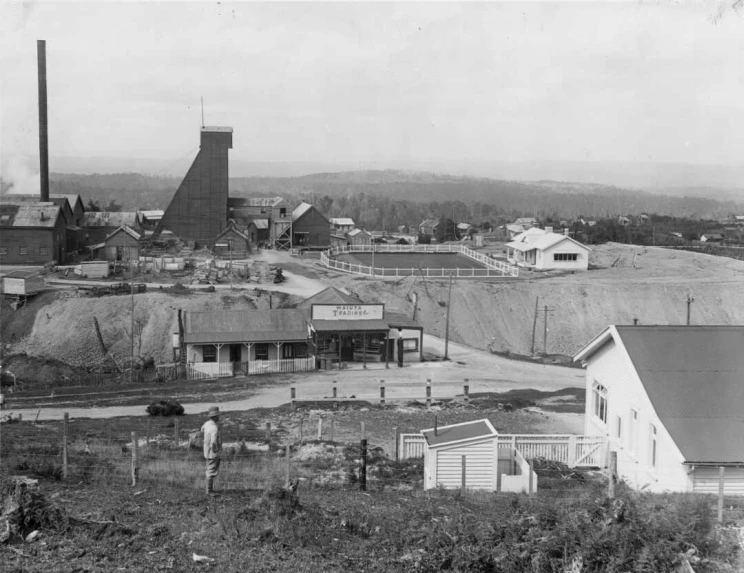
View of Waiuta township and the south shaft. French, Derek: Photographs of Waiuta, West Coast taken by Joseph Divis. Ref: PAColl-4796-22. Alexander Turnbull Library.
Brendon Wilshire collection
Having a resident photographer was unusual for a small remote town in Aotearoa New Zealand in the early 1900s. Box Brownie type cameras would have been available and snap shots would have existed however Divis, while working full time as a miner took his craft much more seriously, using a professional camera and shooting onto glass plate negatives in both half plate (120 × 165 mm) and quarter plate (83 x 108mm) size.
Many of Divis’ negatives survive thanks to friends keeping them safe after his death. A large collection donated by Brendon Wilshire now resides in the Alexander Turnbull Library archive.
See the Wilshire collection — PA-Group-00527
Because the Wilshire collection is currently undigitised, the photographs illustrating this post are from a collection of 28 photographic prints made from Divis negatives loaned by Derek French in 1968 (PAColl-4796).
Documenting small town life
I believe Divis’ photographs have had a large roll in piquing interest in the town from people who don’t otherwise have a connection to it. He was a good photographer, and in a larger town might have made a living from it.
One of the best things about his images is that he photographed everything — the town site, the mine (inside and out), events including the town’s Jubilee celebrations, weddings, union meetings, the school, families and their pets.
Often placing himself into the images, through Divis’ photographs we build up a picture of life in the town unusual for communities of this size and remoteness at the time.
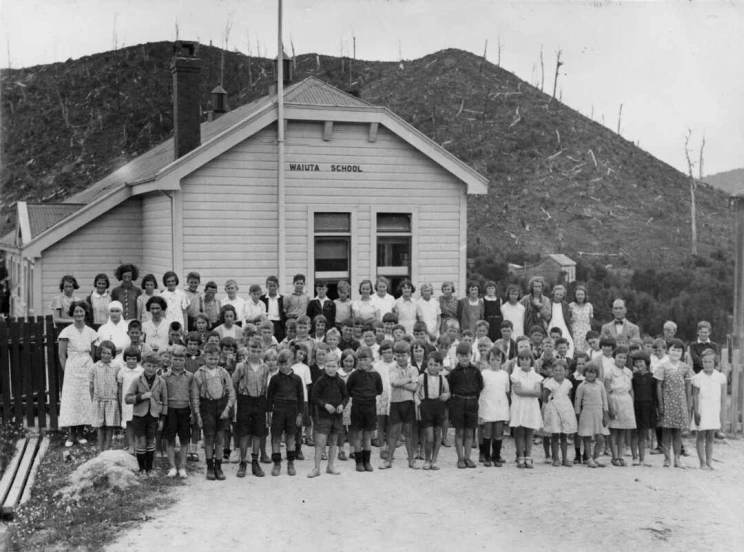
Waiuta school, West Coast, New Zealand. French, Derek: Photographs of Waiuta, West Coast taken by Joseph Divis. Ref: PAColl-4796-25. Alexander Turnbull Library.
'Through the eyes of a miner'
Simon Nathan, in his 2010 book ‘Through the eyes of a miner: The photography of Joseph Divis’ tells us a little about Divis:
It is difficult to find much personal information on Divis. Those who remembered him recall that he was always courteous and friendly, a hard worker, and precise in everything he did. It was said that he was one of the few men who worked for wages in the Blackwater mine because he was too slow and fussy to make money working on contract. As a foreigner with an artistic bent, who did not play sport or apparently socialize much at the pub, Divis must have been an outsider in Waiuta. But he loved the town where he lived for over 40 years. He stayed on long after the mine closed in 1951, and was one of the last inhabitants of the ghost town until he died in 1967. — Nathan, Simon, 'Through the eyes of a miner: The photography of Joseph Divis', Greymouth: Friends of Waiuta, 2016. P. 7.
Sometimes being slightly outside the main action is a benefit to a photographer. In fact introverted people often use photography as a device to include themselves socially, hiding in plain sight.
Many of Divis' photographs in the Wilshire collection show family events and outings. For a single man with no family locally photography may have been a device of inclusion.

Gold miners at a union meeting outside Waiuta Miners Hall. French, Derek: Photographs of Waiuta, West Coast taken by Joseph Divis. Ref: PAColl-4796-02. Alexander Turnbull Library.
Photographing Divis' photos
Most of the Divis photos in the Wilshire collection have not yet been digitised by the National Library, and when the opportunity arose for me to photograph them I had some choices to make.
I could have photographed them directly from above, recording faithfully the exact framing and focus of Divis’ original images, which would have given me the same result as a digital scan. However, I decided that I wanted to emphasise the object-ness of the glass plate negatives, their size and weight — so different from photographic materials used today.
I also wanted to have control over the content of the photographs I made rather than simply reproducing Divis' photographs. I employed a 200mm telephoto macro lens, which enabled me to frame small parts of the original images from a short distance away, essentially cropping out and enlarging small parts of his photos.
I also deliberately photographed from a 45 degree angle, which due to shallow depth of field meant only a small part of what I was photographing would be in focus. This technique allowed me to draw the viewers’ attention towards very small details in the photographs.
This image below is an example of this technique. The original photograph depicts a man having his hair cut at the town barber shop (which is one of the few buildings in the town that still stands today). My photograph highlights a detail in the background where hair products are stacked on the shelves. The text in my photograph appears backwards because I photographed the negatives emulsion side up, to gain the sharpest image. However the emulsion is on the back of the negative, so the image appears reversed. I have flipped my digital files so that the image will be the right way around.
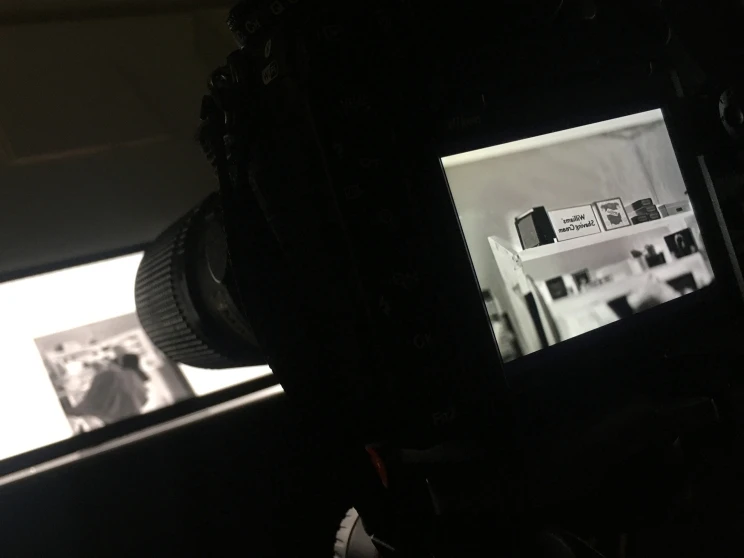
Photographing a Joseph Divis glass plate negative at the National Library in December 2020.
Material objects
Working with Deidra Sullivan, Curator Photographic Archive, we selected negatives using written descriptions because without digital scans we could only see what was in the photographs once the negatives had been physically brought up from storage. I was also able to identify some images with interesting details from Simon Nathan’s book.
I worked through the glass plates looking for small details I could concentrate on; a bicycle, a vase of flowers, a curtain floating out an open window, or the lace in a wedding dress.
My images
These details remind the viewer that like us, the lives of the people in this community were filled with material objects that made up their world.
Detail of Tournament on the bowling green
Detail of Tournament on the bowling green after official opening on 8 November 1931; mine buildings in background. Photo by Caroline McQuarrie.
Detail of photo from Photographs of New Zealand gold mining by Joseph Divis. Ref: 1/2-233052-G. Alexander Turnbull Library.
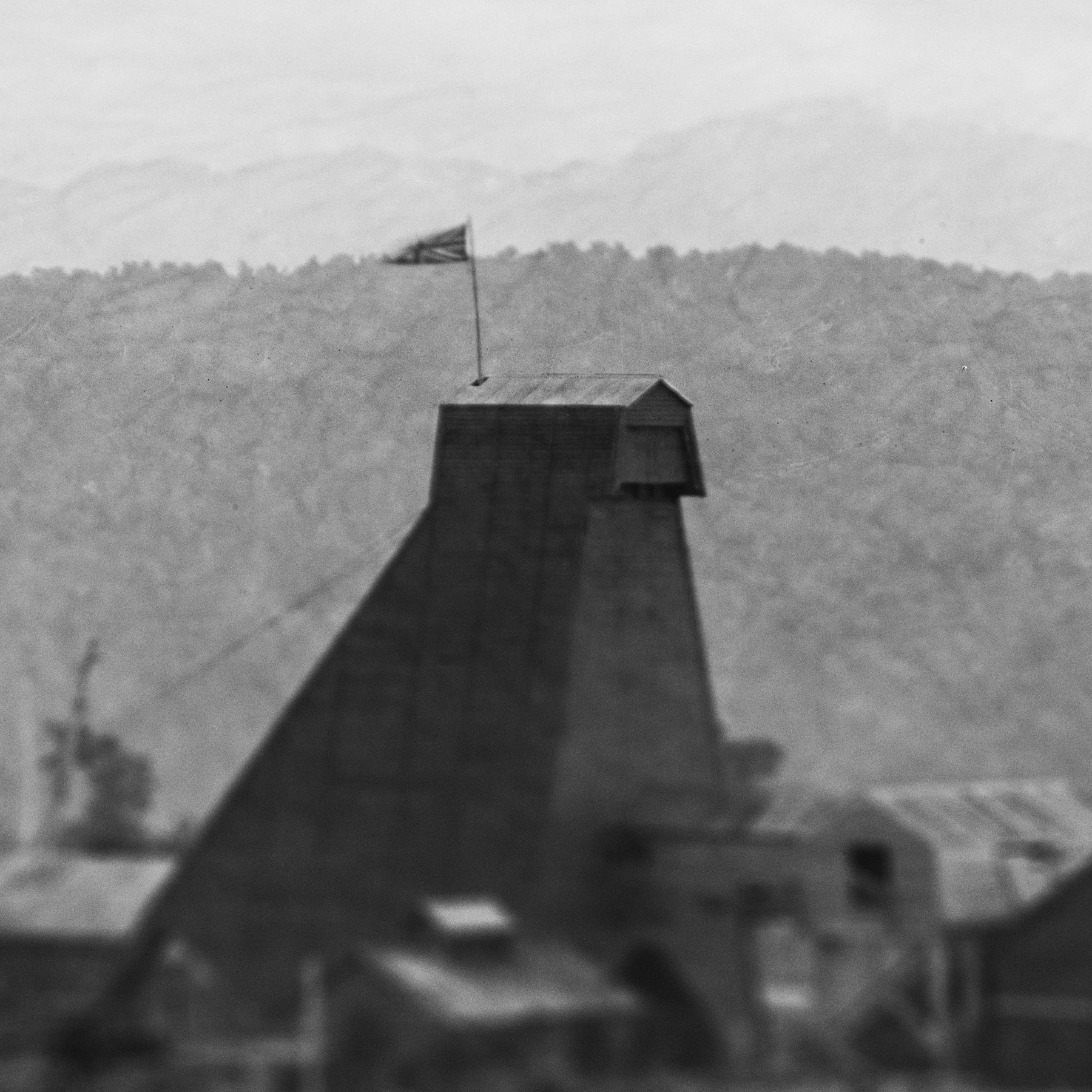
Detail of Waiutu Jubilee
Detail of Waiuta Jubilee, 7 November 1931. Crowd outside hotel. Photo by Caroline McQuarrie.
Detail of photo from Photographs of New Zealand gold mining by Joseph Divis. Ref: 1/2-233057-G. Alexander Turnbull Library.
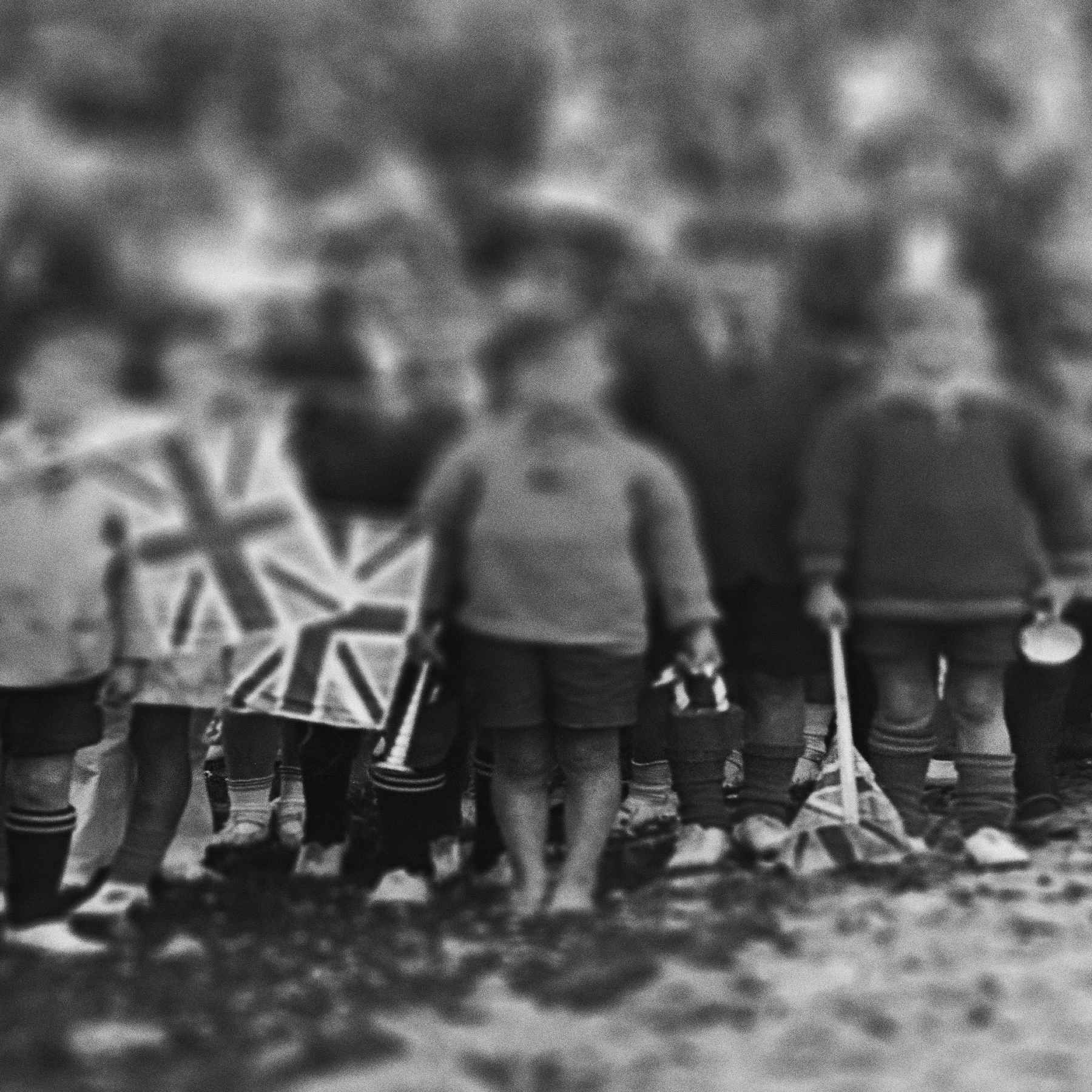
Detail of photo from Photographs of New Zealand gold mining by Joseph Divis. Ref: 1/2-233057-G. Alexander Turnbull Library.
Detail of wedding of Mary Thorn and Harry Coulson
Detail of Wedding of Mary Thorn and Harry Coulson, October 1931. Photo by Caroline McQuarrie.
Detail of photo from Photographs of New Zealand gold mining by Joseph Divis. Ref: 1/2-233353-G. Alexander Turnbull Library.
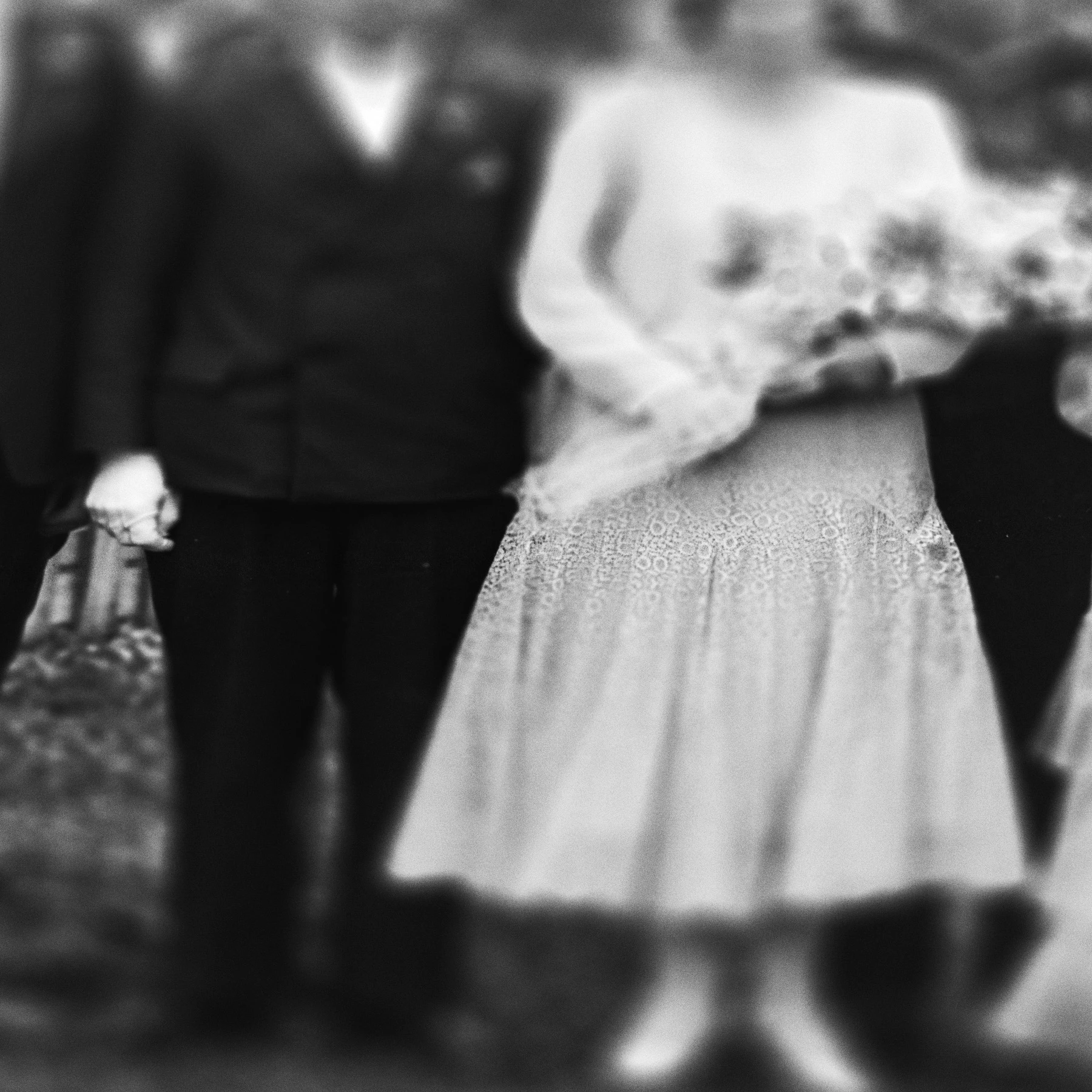
Detail of photo from Photographs of New Zealand gold mining by Joseph Divis. Ref: 1/2-233353-G. Alexander Turnbull Library.
Waiuta historic site and ghost town
I started photographing the Waiuta historic site in 2011, initially as part of a project looking at abandoned town sites on the West Coast, exploring how communities had shifted due to economic factors in the early colonial settler period of the region. However, Waiuta caught my imagination a little more than the other towns I visited.
It may have been due to my first visit on a hot summer day when I wandered down to the remains of the swimming pool and imagined being a child and running up the hill to jump into the cool water.
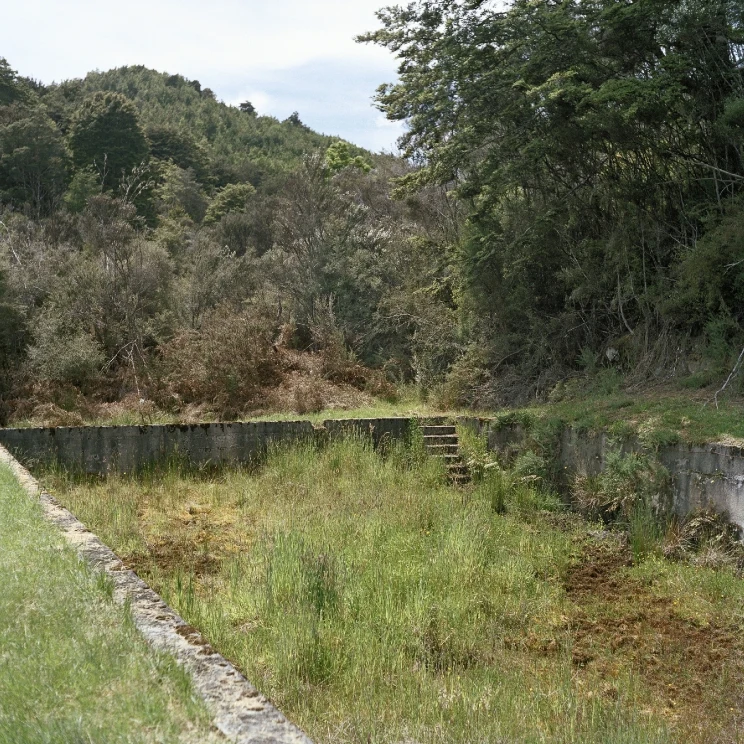
Swimming pool, Waiuta, December 2011. Digital photographic print from film scan. Photo: Caroline McQuarrie
It may also have been because Waiuta existed in my imagination before I visited. I was around 10 years old and living further south in Greymouth when the historic town site was first developed into an attraction for visitors, opening in 1985. I remember my parents discussing a friend of theirs who had been closely involved. What I remember most was that they called it a ‘ghost town’, and this really caught my imagination.
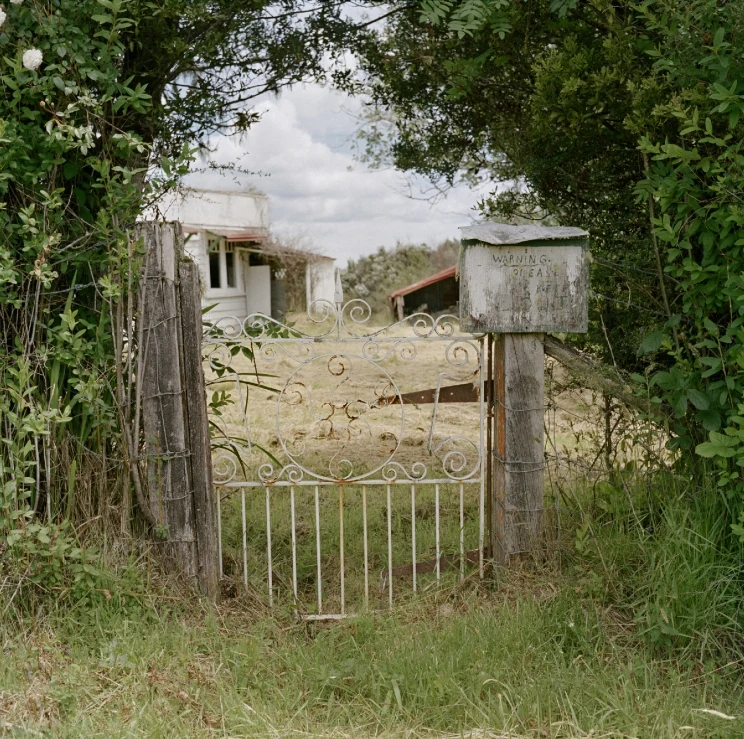
Former residence of Joseph Divis, photographer and miner (uninhabited), Waiuta, December 2011. Digital photographic print from film scan. Photo: Caroline McQuarrie
Hunt’s model village
There have been many who have been fascinated by Waiuta over the years. Alan Hunt, grandson of a Waiuta miner, in the early 2000’s created a model village of the town at a site near Greymouth.
Hunt’s model village was largely constructed from Divis’ photographs, which makes the models quite recognisable if you know the original photos.
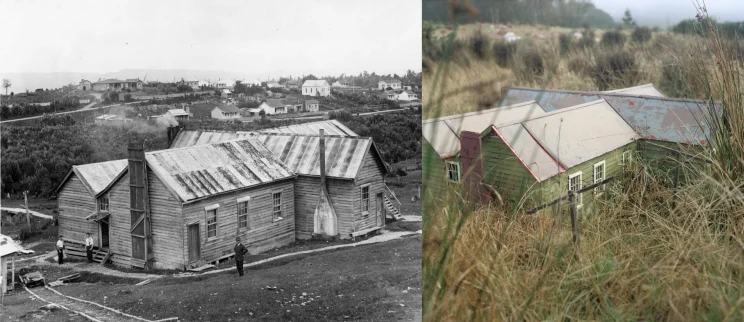
L: A boarding house in Waiuta, West Coast. French, Derek: Photographs of Waiuta, West Coast taken by Joseph Divis. Ref: PAColl-4796-05. Alexander Turnbull Library. R: Waiuta Model Village #3 Boarding house, 2013. Digital photographic print from film scan. Photo: Caroline McQuarrie
I photographed the Waiuta model in 2013, by which time the West Coast weather had taken its toll; what I photographed was a ghost town model of a real ghost town.
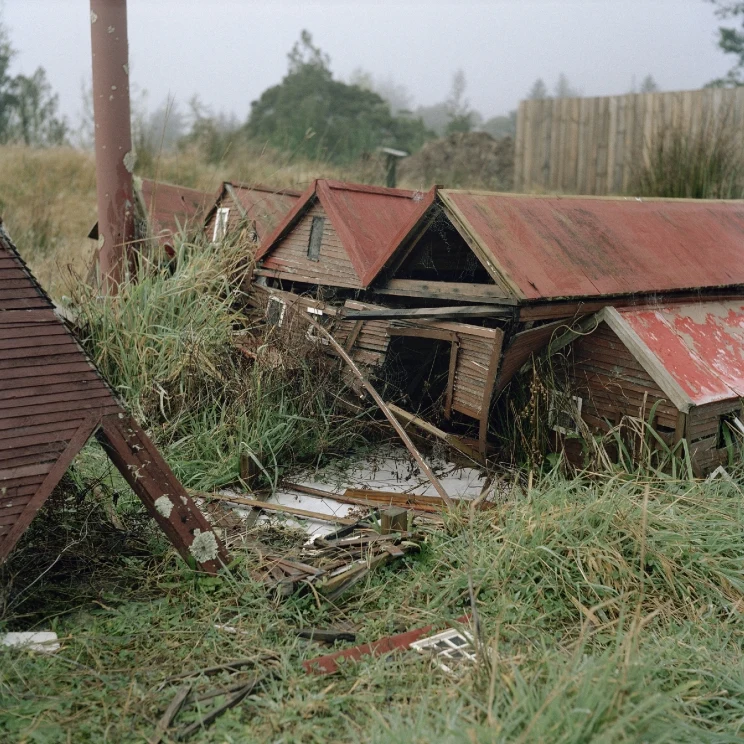
Waiuta Model Village #6 Shaft and mine buildings, 2013. Digital photographic print from film scan. Photo: Caroline McQuarrie
Collective memory
I have now been working on this ongoing project for a decade, and one day I hope to publish it as a photobook. Opportunities open up gradually. Collating imagery from the historic town site, the model village, and now the glass plate negatives contemporary to the town I continue to slowly build up the material.
Each element is a memory, maybe not mine personally, but a collective memory. What I enjoy most about bringing them together is the mix of the official (the historic site and the National Library collection) with the vernacular (moments from life in the town and the model village).
Memory is made up of fragments and strands pulled together from a myriad of sources, and the way Waiuta is remembered today is woven together from all these elements.
Detail of Tournament on the bowling green
Detail of Tournament on the bowling green after official opening on 8 November 1931; mine buildings in background. Photo by Caroline McQuarrie.
Detail of photo from Photographs of New Zealand gold mining by Joseph Divis. Ref: 1/2-233052-G. Alexander Turnbull Library.
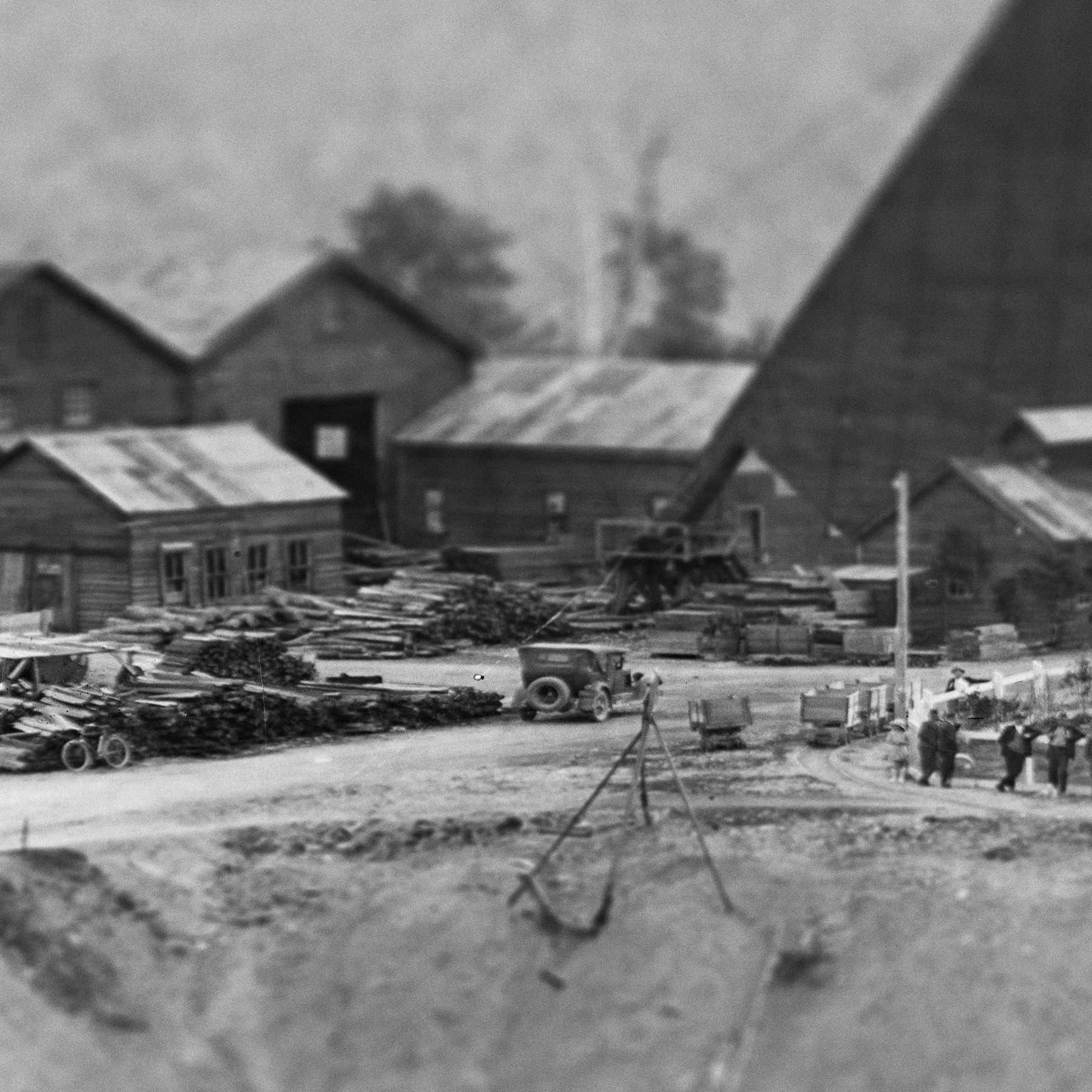
Detail of photo from Photographs of New Zealand gold mining by Joseph Divis. Ref: 1/2-233052-G. Alexander Turnbull Library.
Detail of View of Snowy River Battery, processing plant and houses
Detail of View of Snowy River Battery, processing plant and houses. Photo by Caroline McQuarrie.
Detail of View of Snowy River Battery, processing plant and houses. Ref: 1/2-233101-G. Alexander Turnbull Library.
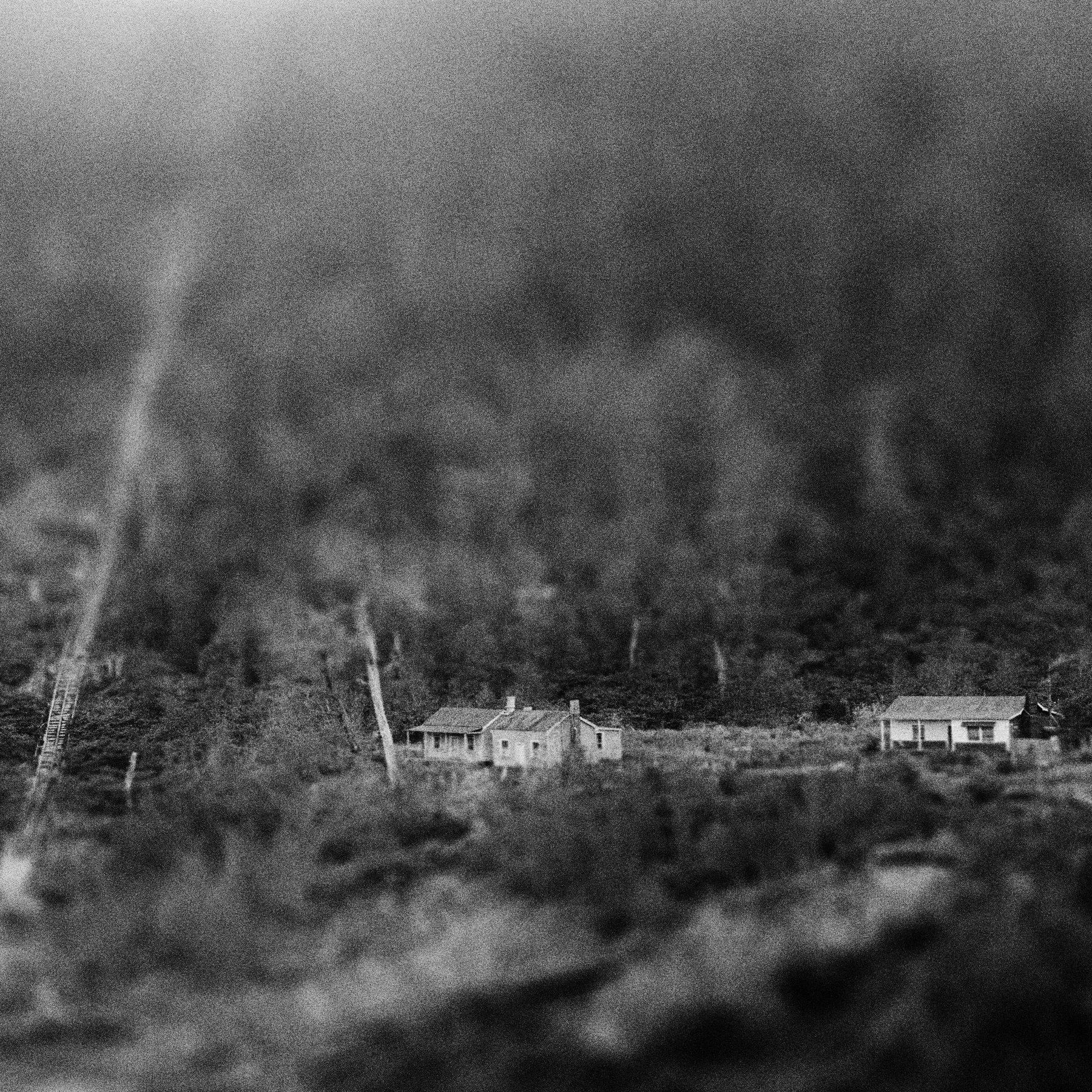
Detail of Refreshment tent at Waiuta jubilee celebrations
Detail of Refreshment tent at Waiuta jubilee celebrations, 7 November 1931. Photo by Caroline McQuarrie.
Detail of photo from Photographs of New Zealand gold mining by Joseph Divis. Ref: 1/2-233358-G. Alexander Turnbull Library.

Detail of photo from Photographs of New Zealand gold mining by Joseph Divis. Ref: 1/2-233358-G. Alexander Turnbull Library.
Congratulations Caroline, what a fine piece this. I especially like the details, your juxtaposition of then and now and your own lovely images of place. This is one of the best blogs I've read as illustrating an 'appreciation' and response, both to this important collection and the collections of ATL generally. Thank you. Peter